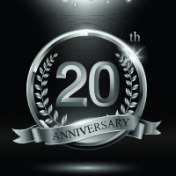We love when our viewers send questions in during the webcast but unfortunately we can’t answer all of them during the time allotted! If you asked a question see below for answers, or if after viewing, you have any questions that weren’t asked, please feel free to send those over to support@goldenhelix.com. Does this work for FFPE derived DNA or ctDNA?… Read more »
In the first two parts of this blog, we presented examples of how to leverage Warehouse-stored VSClinical and CNV assessment catalogs in the VarSeq project. Now we are going to explore the Warehouse interface a bit more and show how to query on stored variant data. To access Warehouse from VarSeq, click the V Connect icon located in the top… Read more »
We recently hosted a webcast covering the value and application of VSWarehouse through VarSeq. Not only is VSWarehouse a solution for storing your NGS data in a central repository, but it also provides a means to enhance the tertiary analysis done in VarSeq. VSWarehouse will store all your sample/variant data but also stores your catalogs of pathogenic variants, clinical reports, and has the capability of filtering/querying on all your stored data quickly. In addition,… Read more »
This webcast generated some great questions! If you have any other questions for me that are not answered below, please feel free to ask those by emailing support@goldenhelix.com. To what level does the Warehouse scale? We have tested multiple instances of Warehouse in-house and on the cloud and it scales incredibly well to tens of thousands of samples and 100s… Read more »
Even though GRCh37 is currently the most widely used human genome assembly, GRCh38 provides a more complete human reference genome, offers more accurate genomic analysis, and includes centromere and mitochondrial information. However, we’re getting ahead of ourselves. Perhaps start with how we got here. The Human Genome Project started this all off with the world’s largest biological collaboration project in… Read more »
This webcast generated some great questions! If you have any other questions for me that are not answered below, please feel free to ask those by emailing support@goldenhelix.com. Does VSClinical come with support for the new reference genome? Yes! We worked hard to make everything work in VSClinical regardless of your choice of reference genomes. The only caveat is that… Read more »
Sentieon; your swift secondary analysis solution. Golden Helix’s software solutions present a reputable and top-quality analysis of your NGS data. Looking at this process from a 30,000 ft view, the annotation and filtering of variants in your vcf files and discovery of CNVs based coverage data in the bam file make up the tertiary level portion of the analysis. However,… Read more »
In my recent webcast, I demonstrated how VS-CNV users can detect high-quality copy number variant events. If you didn’t have a chance to join, you can view the recording below! This webcast generated a lot of great questions! If you have any other questions about the content covered in this webcast that is not answered below, please feel free to… Read more »
With this two-part blog series, users should now be able to perform CNV analysis using their data, set up basic quality filter standards to isolate high-quality events and utilize annotations to hone in on publicly known events as well as in-house recorded CNVs from previous projects.
If we take a look back in time, a lot happened in September 1998. It is the month in which the first ever “Who wants to be a Millionaire?” show debuted on ITV in Britain. Larry Page and Sergey Brin incorporated Google in September, registering the Google.com domain on September 15, 1998. And on that very same day, we officially… Read more »
2017 was a busy year regarding the development of our CNV tools. Since the release of the CNV caller, we have produced quite a bit of content tailored to assist our users with getting started. Here are some links: Robarts Research Institute CNV analysis on patients with familial hypercholesterolemia CNV annotations Common CNV questions CNV calling with shallow whole genome… Read more »
The recent release of VSClinical gives users the ability to evaluate variants based on the 33 criteria according to the American College of Medical Genetic and Genomics (ACMG) guidelines. This feature leverages a variety of variant sequencing evidence including population data, functional data, and computational predictions while providing rich visualizations and auto recommendations to help answer challenging criteria. This highly… Read more »
In our previous webcast, we discussed the splice site algorithms for clinical genomics within VSClinical. We took it a step further in yesterday’s webcast and looked at the functional predictions and conservation scores. We had a great turnout for this event with lots of great questions from the attendees. I’d like to recap our Q&A for anyone else who might… Read more »
Streamlining the ACMG Guidelines and Providing Scoring Recommendations As we discussed in our recent webcast on VSClinical, the process of scoring the ACMG guidelines requires evaluating evidence for the connection between a variant and the disorder or condition being evaluated by the genetic test for an individual. These lines of evidence cover clinical presentation, gene function, bioinformatic annotations and in-silico… Read more »
Functional Predictions and Conservation Scores in VSClinical Several algorithms have been developed to predict the impact of amino acid substitutions on protein function and quantify conservation of nucleotide positions. These methods provide vital supporting evidence to clinicians when interpreting variants in accordance with the ACMG guidelines. The two most popular functional prediction algorithms are SIFT and PolyPhen2, while the most… Read more »
In the last installment of this series, I covered the basics of variant interpretation and how it fits into the genomic testing process. Now we can cover in more detail how VSClinical works, what algorithms and annotation sources power the recommendations and how the ACMG criteria are organized into useful categories. VSClinical is built to make the process of evaluating… Read more »
This week we launched VSClincial with our first webcast to show our powerful new way to perform variant interpretation following the ACMG guidelines. Our audience asked a lot of great questions on the new product and I’d like to highlight a few here. Can VSClinical run on a laptop and/or a locked down environment? Like all of Golden Helix products, you have… Read more »
Yesterday we launched VSClincial with our first webcast in what will be a series about this powerful new way to perform variant interpretation following the ACMG guidelines. In this post, I wanted to cover the motivation for VSClinical and how we curated and presented the 33 criteria from the ACMG Guidelines into an intuitive workflow with various bioinformatic evidence and… Read more »
We just came back from ACMG in North Carolina where we launched our new product VSClinical. The reception has been terrific and our booth has never been as frequented. We had record level visitors and demo presentations. So, what is all that buzz about this new product? Why do people care so much and how does it help a clinical… Read more »
Relating human phenotypes to genotypes is the name of the game with OMIM, and as their website says, “is intended for use primarily by physicians and other professionals concerned with genetic disorders, by genetics researchers, and by advanced students in science and medicine.” The Online Mendelian Inheritance in Man (or OMIM) was originally created by Dr. Victor A. McKusick in… Read more »









